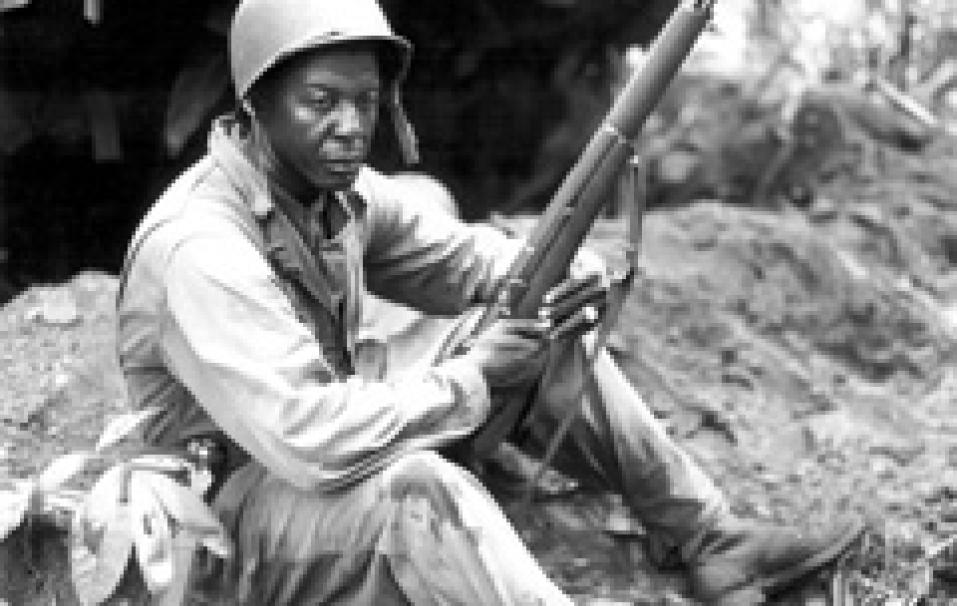By Rich Koone, Education Director, National Museum of the Pacific War
During World War II, more than 2.5 million African American men registered for the draft. Of these, 1.2 million served in the military during the war. During their time in the military, they experienced discrimination, served in segregated units, and had segregated facilities. Despite this, they met the challenge and persevered. They served their country with distinction, made valuable contributions to the war effort, and earned high praises and commendations for their struggles and sacrifices.
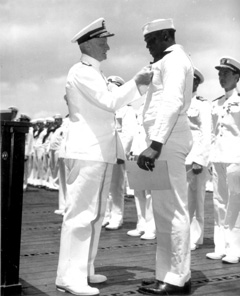
167,000 African Americans served in the Navy, initially as mess attendants and cooks. They were also assigned duties as gun crews. In 1942, general service was opened for African Americans to serve in other capacities. In March 1944, the first 13 African American naval officers were commissioned. One of the first heroes of the war was Ship’s Cook Third Class Doris Miller, from Waco, aboard the USS West Virginia at Pearl Harbor on December 7, 1941. His Navy Cross citation reads in part:
“...distinguished devotion to duty, extraordinary courage and disregard of his personal safety during the attack on the Fleet in Pearl Harbor on 7 December 1941. While at the side of his Captain on the bridge, Miller despite enemy strafing and bombing, and in the face of serious fire, assisted in moving his Captain, who had been mortally wounded, to a place of greater safety and later manned and operated a machine gun until ordered to leave the bridge.”
He was awarded the Navy Cross by Admiral Chester W. Nimitz, from Fredericksburg. Unfortunately, Doris Miller was killed in action when the USS Liscome Bay was sunk in November 1943 during operations in the Gilbert Islands.
The first ship named for an African American was the USS Harmon (DE-678) in honor of Mess Attendant Leonard Roy Harmon of Refugio, Texas. Harmon was posthumously awarded the Navy Cross for his actions aboard the USS San Francisco during the Battle of Guadalcanal.
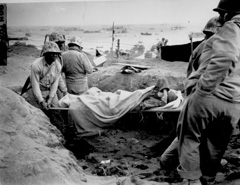
909,000 African Americans served in the Army, and 78 percent of them served in service branches (engineer, quartermaster, and transportation). The African American combat units in the Pacific included the 93rd Infantry Division, the 24th Infantry Regiment (one of the original Buffalo Soldier regiments), 10 anti-aircraft battalions, and one coast artillery battalion. In the China-Burma-India Theater, 60 percent of the engineer units that built the Ledo Road from India to the connection with the Burma Road were African Americans.
17,000 African Americans served in the Marine Corps during the war, the majority as support troops in ammunition and depot companies. On Peleliu, some of these support troops took up rifles and assisted the 1st Marine Division with fighting on the island. Approximately 800 African Americans served on Iwo Jima, bringing up ammunition and supplies as well as evacuating wounded. The only two African American combat units formed by the Marine Corps were the 51st and 52nd Defense Battalions, which garrisoned captured islands.
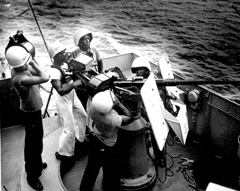
Nearly 5,000 African Americans served in the Coast Guard—2,300 as stewards mates and gun crews, and 2,400 in shore establishments (Coast Guard stations, beach patrols, and headquarters). In 1943, the Coast Guard began a slow integration on ships and commissioned the first African American Coast Guard officer.
George Watson, U.S. Army, was the only African American to be awarded the Medal of Honor in the Pacific during World War II. His unit was aboard a ship that was torpedoed on March 8, 1943. Following the sinking of the ship, Watson repeatedly swam away from the life raft to save other men and bring them back to the raft, until one time he swam away and never came back.
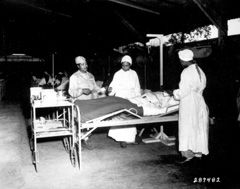
African American women volunteered in large numbers. Many served as nurses in the both the Army and Navy Nurse Corps. Others served in all branches of the armed forces. On the home front, women worked in factories building ships, tanks, and airplanes; others supported war bond drives, raised victory gardens, and assisted with scrap drives.
Although there were no famous units like the Tuskegee Airmen in the Pacific theater, the African Americans serving in the Pacific performed their duty just as proudly as their fellow countrymen in the European theater.

